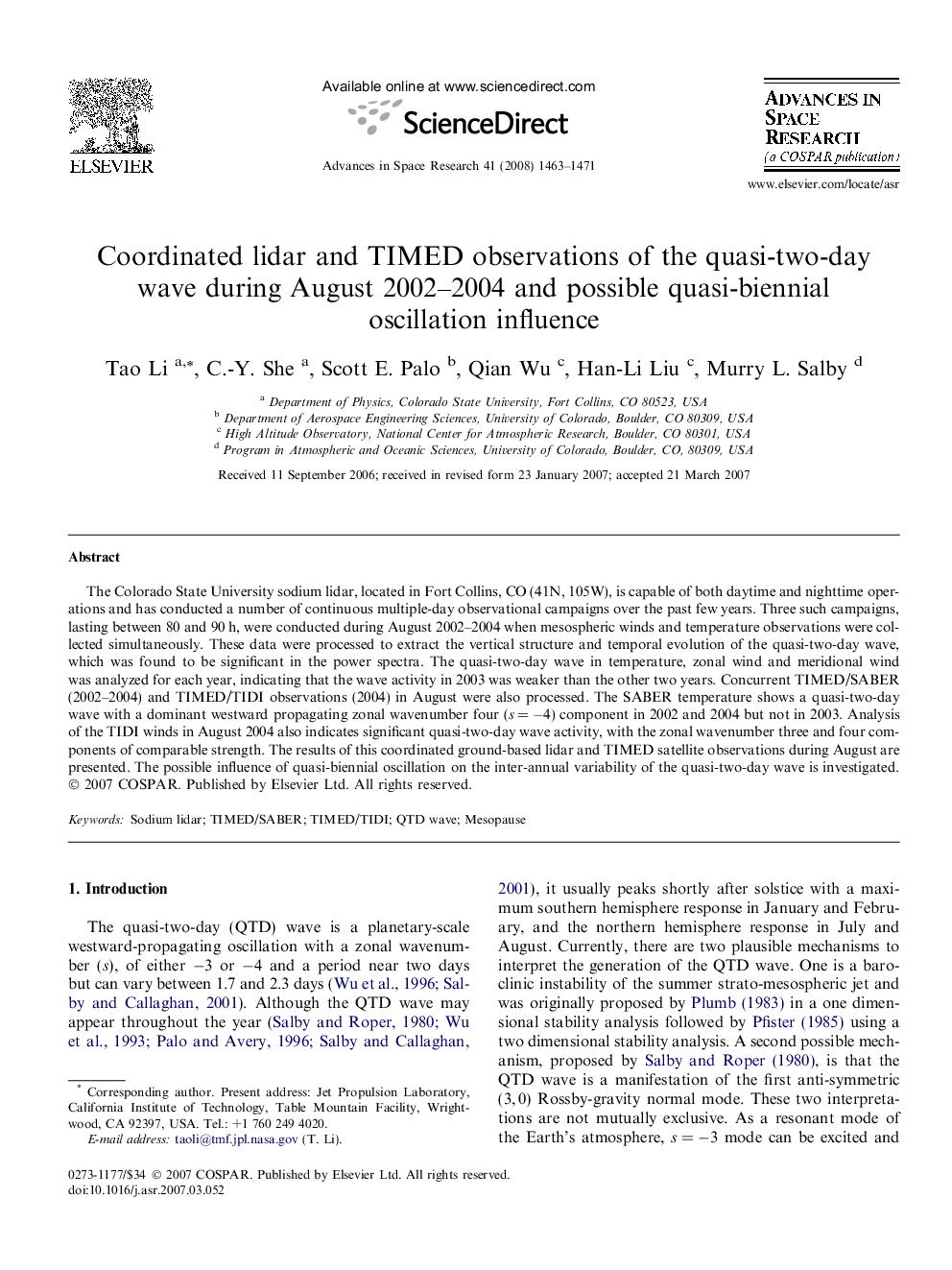| Article ID | Journal | Published Year | Pages | File Type |
|---|---|---|---|---|
| 1768184 | Advances in Space Research | 2008 | 9 Pages |
Abstract
The Colorado State University sodium lidar, located in Fort Collins, CO (41N, 105W), is capable of both daytime and nighttime operations and has conducted a number of continuous multiple-day observational campaigns over the past few years. Three such campaigns, lasting between 80 and 90 h, were conducted during August 2002-2004 when mesospheric winds and temperature observations were collected simultaneously. These data were processed to extract the vertical structure and temporal evolution of the quasi-two-day wave, which was found to be significant in the power spectra. The quasi-two-day wave in temperature, zonal wind and meridional wind was analyzed for each year, indicating that the wave activity in 2003 was weaker than the other two years. Concurrent TIMED/SABER (2002-2004) and TIMED/TIDI observations (2004) in August were also processed. The SABER temperature shows a quasi-two-day wave with a dominant westward propagating zonal wavenumber four (s = â4) component in 2002 and 2004 but not in 2003. Analysis of the TIDI winds in August 2004 also indicates significant quasi-two-day wave activity, with the zonal wavenumber three and four components of comparable strength. The results of this coordinated ground-based lidar and TIMED satellite observations during August are presented. The possible influence of quasi-biennial oscillation on the inter-annual variability of the quasi-two-day wave is investigated.
Keywords
Related Topics
Physical Sciences and Engineering
Earth and Planetary Sciences
Space and Planetary Science
Authors
Tao Li, C.-Y. She, Scott E. Palo, Qian Wu, Han-Li Liu, Murry L. Salby,
